By all accounts, downtown Friendship Heights is temporarily dead. Jackhamming, sidewalk blockages and the large machinery of a construction project around the main neighborhood center at the intersection of Wisconsin Ave and Western Ave has visibly deterred residents from the once buzzing shopping district.
Instead of merely viewing it as a disturbance, community leaders viewed it as an opportunity.
This area could be a mecca for cyclists and public transportation users with just a little bit of foresight, planning and money. Visitors can see whispers of this potential in the brick-laid sidewalks designated for bikes, mostly empty bike racks near the Metro station and signage for cyclists to better navigate the area.
“This is kind of an important opportunity to transition the space when nobody’s using it,” said Tom Quinn, the region’s representative on the Advisory Neighborhood Commission.
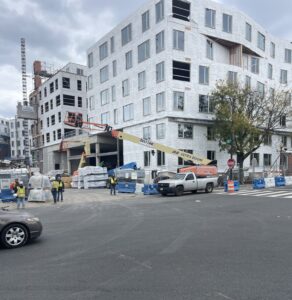
The only, but a large missing piece: protected bike lanes. They’re strips of asphalt offset by concrete barriers blocking drivers from veering into the cyclists’ territory. Cyclists say they’re the only real way to incentivize cycling in urban areas.
Two small protected lanes are coming to downtown Friendship Heights in the coming months after receiving the go-ahead from both the Advisory Neighborhood Commission and the District Department of Transportation this fall. A construction date has yet to be set but is anticipated in either the fall or spring, Quinn said.
The lanes are planned for 44th Street NW between Harrison Street and Jenifer Street and for Jenifer Street between Western Avenue and 43rd. The completed design was published this month for the plan covering a third of a mile of road. DDOT officials did not disclose the price tag in time for publication.
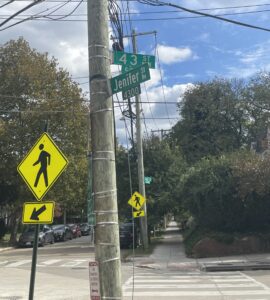
The project is a bit of a gamble. It assumes there’s a demand for this kind of infrastructure. But if they’re not built, the community will never know what type of cycling potential the neighborhood could have and, in turn, the potential to reduce greenhouse gases, car accidents and pedestrian deaths.
“You don’t decide whether or not to build a bridge based on how many people are swimming across the river,” Quinn said. “People just don’t use something if it’s not there.”
However, evidence throughout the city and common sense suggest that protected bike lanes could draw cyclists to what’s currently “a pretty unpleasant intersection” to bike through, said Josh Rising, an active cyclist in the area.
“They really give bikers that confidence that this is a place that’s safer. They really do a lot to encourage people to get on a bicycle who otherwise might be hesitant because they’re so worried that they might be struck by a car,” Rising said.
Rising co-founded Ward 3 Bicycle Advocates to organize the effort to better lobby for local cycling infrastructure. The fact the group has several hundred email subscribers may hint at the more widespread demand for this kind of work in the area.
And where better to start than near the Metro, Quinn added.
“You got to start building a network, he said. “We think this is a really important place to do it.”
The Friendship Heights neighborhood abuts Montgomery County, which has a more robust biking network. Quinn said the new lanes will allow cyclists to more seamlessly traverse between the two areas.
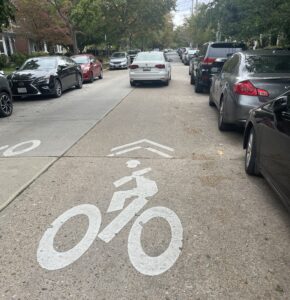
As a cyclist, Rising has observed cars blocking bike lanes. It forces cyclists to make a snap decision about navigating around them.
“As somebody who’s on a bike, you then have to decide, ‘Do I need to pull around this vehicle and into where the traffic is?” he said.
These lanes are just the beginning for a planned larger protected bike lane network for the shopping center region, Quinn said, adding that lanes are planned next summer for Western Avenue, a larger thoroughfare dividing Maryland and D.C.
Friendship Heights is an ideal place to invest in this work, Rising said, partly because there are numerous schools around. Protected lanes could get kids out of school buses and onto the roads cycling to class.
“Kids 40, 50 years ago, the vast majority biked to school,” Rising said.
To revert back to that, the city has to work through and around the built environment, which has thrown many literal and metaphorical roadblocks in the way of safely getting around the neighborhood on bike and foot. Namely spotty support from D.C. Mayor Muriel Bowser and city administration officials, he said, who removed Connecticut Avenue from a bike lane project earlier this year.
“D.C. has set out so many goals for what it wants to achieve as a city – Vision Zero goals [reducing pedestrian deaths], climate change goals … the question is how do we actually reach these goals,” Rising said. “In so many of the cases cases, it’s making it easier and safer for people to bike.”

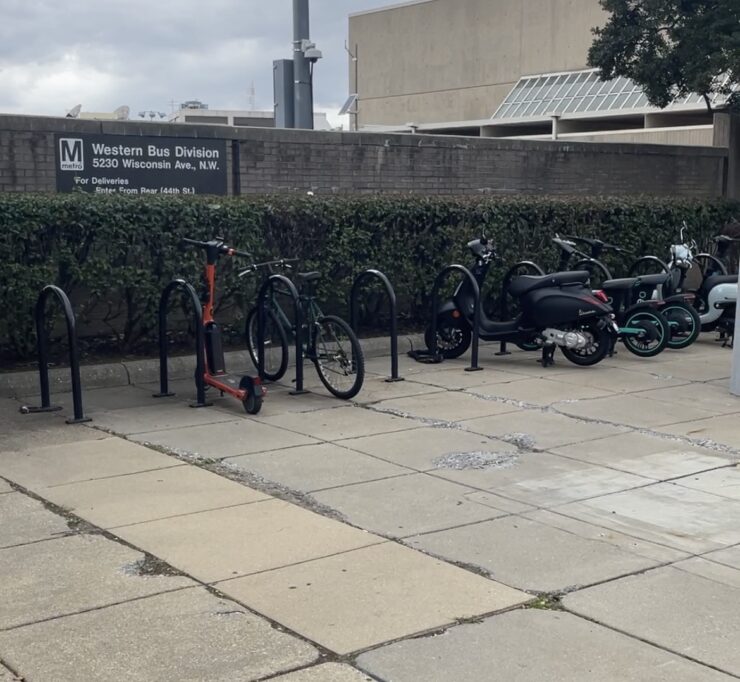
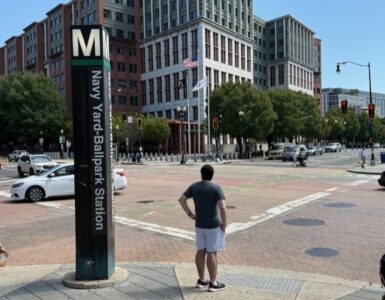

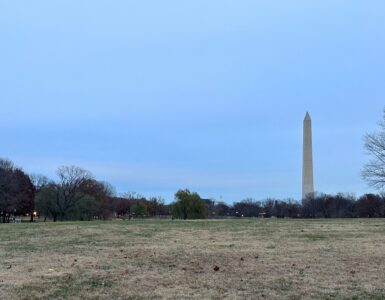










Add comment